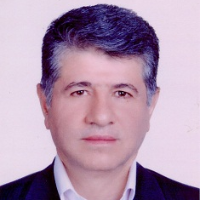fMRI-Based Multi-class DMDC Model Efficiently Decodes the Overlaps between ASD and ADHD
Neurodevelopmental disorders comprise a group of neuropsychiatric conditions. Presently, behavior-based diagnostic approaches are utilized in clinical settings, but the overlapping features among these disorders obscure their recognition and management. Attention deficit hyperactivity disorder (ADHD) and autism spectrum disorder (ASD) have common characteristics across various levels, from genes to symptoms. Designing a computational framework based on the neuroimaging findings could provide a discriminative tool for ultimate more efficient treatment. Machine learning approaches, specifically classification methods are among the most applied techniques to reach this goal.
We applied a novel two-level multi-class data maximum dispersion classifier (DMDC) algorithm to classify the functional neuroimaging data (utilizing datasets: ADHD-200 and autism brain imaging data exchange (ABIDE)) into two categories: Neurodevelopmental disorders (ASD and ADHD) or healthy participants, based on calculated functional connectivity values (statistical temporal correlation).
Our model achieved a total accuracy of 62% for healthy controls. Specifically, it demonstrated an accuracy of 51% for healthy subjects, 61% for autism spectrum disorder, and 84% for ADHD. The support vector machine (SVM) model achieved an accuracy of 46% for both the healthy control and ASD groups, while the ADHD group classification accuracy was estimated to be 84%. These two models showed similar classification indices for the ADHD group. However, the discrimination power was higher in the ASD class.
The method employed in this study demonstrated acceptable performance in classifying disorders and healthy conditions compared to the more commonly used SVM method. Notably, functional connections associated with the cerebellum showed discriminative power.
-
A Graph-Based Statistical Approach to Identifying Functional Connectivity Networks in Patients with Traumatic Brain Injury
Samaneh Talebi, Fatemeh Pourmotahari, Keyvan Olazadeh, , Seyyed Mohammad Tabatabaei
Iranian Journal of Child Neurology (IJCN), Winter 2025 -
Vitamin D and Anti-thyroid Peroxidase Antibody: Tehran Thyroid Study
FS .Saeidian, F. Sarvghadi, A .Amouzegar, L .Mehran, S. Mahdavi, Y. Mehrabi, F .Azizi, H .Abdi*
Iranian Journal of Endocrinology and Metabolism, -
Possible Role of the Pineal Gland in the Human Memory System
Minoo Sisakhti, *
Frontiers in Biomedical Technologies, Autumn 2024 -
Characteristics of Functional Connections and Topographical Properties Distinguished the Healthy State and Obsessive-Compulsive Disorder
Lida Shafaghi, Mohammad Arbabi, Mehdi Tehrani-Doost, Seyed Amirhossein Batouli, Mohammadjavad Ziaa, Mahmoudreza Hadjighassem
Archives of Neuroscience, Oct 2024 -
Using Longitudinal Variance Components Models to Assess Hyper-connectivity in Severe Traumatic Brain Injury Patients
Keyvan Olazadeh, Nasrin Borumandnia, Mahin Habibi, *
Basic and Clinical Neuroscience, Jul-Aug 2024 -
Identifying Factors Related to Serum Lipids Using Multilevel Quantile Model: Analysis of Nationwide STEPs Survey 2016
Parisa Mohseni, Davood Khalili, Shirin Djalalinia, Farshad Farzadfar, *
International Journal of Preventive Medicine, May 2023




